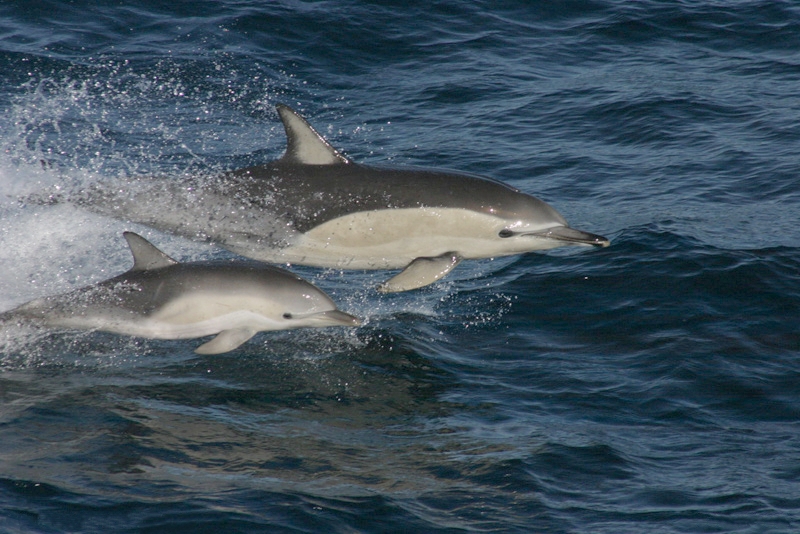Life History & Reproduction
When discussing the developmental lifespan
milestones of the Common Dolphin, variances can be seen between
population zones across the globe. Examples of these populations
include the dolphins of the eastern tropical Pacific and the
dolphins of the North Pacific. These variations show that there is a
connection between geographic location and specific environmental
influences that interfere with the overall life cycle of the Common
dolphin species. That being apparent, it is most likely that the
highlights of the dolphin’s natural life are tending to be
influenced in some way by the natural environment around them.
(Chivers et al. 2007)
The average length of a newborn varies between
geographic locations. The smallest projected length of newborn
dolphins originated from the North Pacific (82cm or 2.7ft), while
the largest projected length was found in the Eastern North Atlantic
region (104.1cm or 3.4ft). (Chivers et al. 2007)
In Washington D.C. at Georgetown University,
scientists studied the behavioral development of mother-calf
relationships in free-range Bottlenose Dolphins (close relatives of
the Common Dolphin). It was observed that newborns, immediately
following birth, coordinate their swimming and breathing to match
that of their mothers. Over time a maturating calf will noticeably
change in many ways regarding its behavior near its parent; the
mother in turn does not become less nurturing, but still continues
to stay near its baby. An example of this seen among dolphin groups
includes the shift of an infant’s swimming pattern from early
‘echelon swimming’ to later ‘infant-positioning’ swimming. In other
words, over time instead of a baby calf swimming adjacent beside its
mother, it will switch to swimming more often underneath its mother
as it matures, all the while staying in contact with her. After its
first month, a calf will start to ‘practice forage’, socialize
independently with other animals, and leave its mother’s comfort
zone more often to explore and play in its marine habitat on its
own. (Mann et al. 1999)
A dolphin’s sexual maturity differs between
environments for the same reasons as their newborn’s lengths do. The
lowest age for sexual maturity in the Common Dolphin was found in
the North Pacific (8 years old). In contrast, the higher age of the
beginning of sexual maturity was found in the Eastern North Atlantic
(9 to 10 years old). Along with sexual maturity, the length at
sexual maturity and the total longevity of the animal vary as well.
(Chivers et al. 2007)
To look at what other organisms interact with
the common dolphin go to Interactions
You lost? Home
